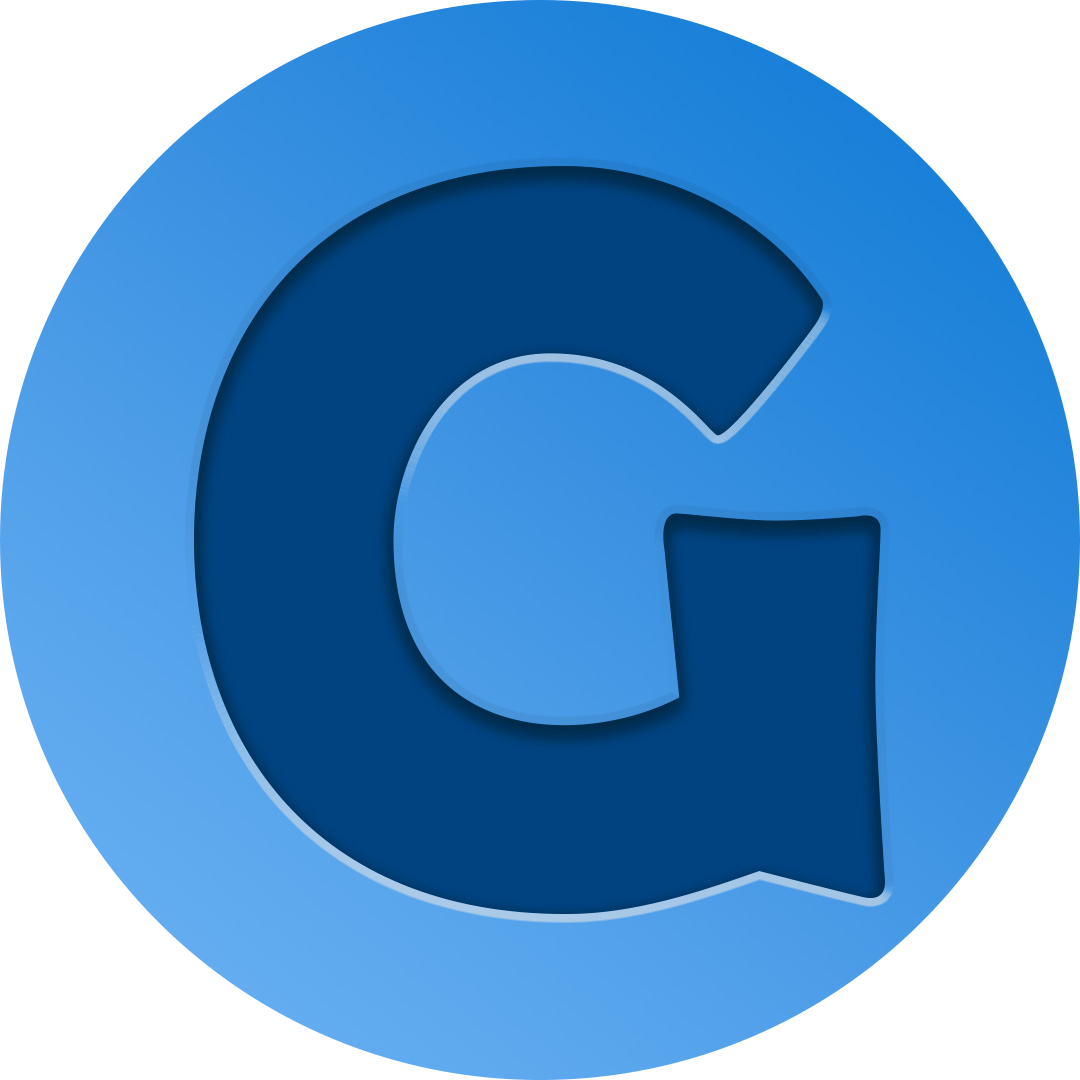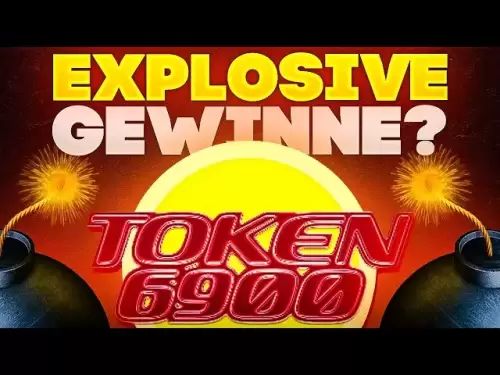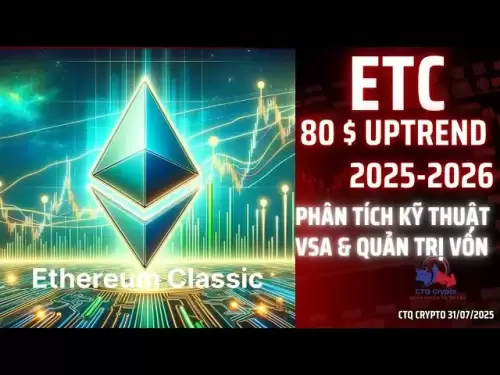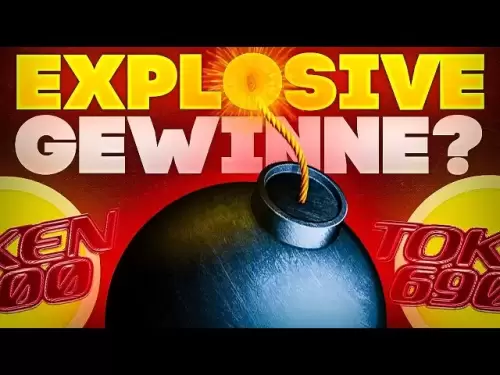-
 Bitcoin
Bitcoin $118400
0.47% -
 Ethereum
Ethereum $3836
2.20% -
 XRP
XRP $3.157
2.98% -
 Tether USDt
Tether USDt $0.9999
-0.03% -
 BNB
BNB $801.5
1.31% -
 Solana
Solana $180.9
2.07% -
 USDC
USDC $0.9999
-0.02% -
 Dogecoin
Dogecoin $0.2225
2.50% -
 TRON
TRON $0.3285
-1.02% -
 Cardano
Cardano $0.7789
2.60% -
 Hyperliquid
Hyperliquid $43.60
2.39% -
 Sui
Sui $3.892
4.41% -
 Stellar
Stellar $0.4229
3.34% -
 Chainlink
Chainlink $18.01
3.98% -
 Hedera
Hedera $0.2745
6.77% -
 Bitcoin Cash
Bitcoin Cash $582.3
3.38% -
 Avalanche
Avalanche $23.77
1.04% -
 Ethena USDe
Ethena USDe $1.001
0.01% -
 Toncoin
Toncoin $3.493
3.59% -
 Litecoin
Litecoin $110.0
2.48% -
 UNUS SED LEO
UNUS SED LEO $8.936
-0.37% -
 Shiba Inu
Shiba Inu $0.00001304
2.49% -
 Uniswap
Uniswap $9.999
1.09% -
 Polkadot
Polkadot $3.897
3.26% -
 Monero
Monero $308.6
-0.83% -
 Dai
Dai $0.9999
-0.01% -
 Bitget Token
Bitget Token $4.504
-0.04% -
 Pepe
Pepe $0.00001154
2.95% -
 Cronos
Cronos $0.1471
3.06% -
 Ethena
Ethena $0.6691
19.53%
How does a private chain ensure privacy and will data be leaked?
Private chains ensure privacy through access control, encryption, and smart contracts, but risks like insider threats and software vulnerabilities require strict monitoring and security audits.
May 16, 2025 at 09:21 am

Introduction to Private Chains
A private chain, also known as a permissioned blockchain, is a type of blockchain network where access is restricted to a select group of participants. Unlike public blockchains, which are open to anyone, private chains are designed to offer enhanced privacy and control over the network. This article delves into how private chains ensure privacy and addresses concerns about data leakage.
Mechanisms for Ensuring Privacy in Private Chains
Private chains employ several mechanisms to ensure the privacy of their participants and the data stored on the network. The primary method is through access control, where only authorized entities can join the network and interact with the blockchain. This is typically managed through a centralized authority or a consortium of trusted parties.
Another crucial mechanism is encryption. Data on a private chain is often encrypted both in transit and at rest, ensuring that even if unauthorized access occurs, the data remains unreadable without the appropriate decryption keys. This adds an additional layer of security to the network.
Smart contracts also play a role in maintaining privacy. These are self-executing contracts with the terms directly written into code. They can be programmed to handle sensitive data in a way that ensures only the necessary parties have access to specific information.
Data Leakage Risks and Mitigation Strategies
Despite the robust privacy measures, the risk of data leakage in private chains cannot be entirely eliminated. One potential risk is insider threats, where authorized participants misuse their access to leak data. To mitigate this, private chains often implement strict access controls and continuous monitoring of user activities.
Another risk is through vulnerabilities in the software or network infrastructure. Regular security audits and updates are essential to identify and patch any weaknesses that could be exploited. Additionally, using secure communication protocols and robust encryption standards can further reduce the risk of data breaches.
Data leakage can also occur through third-party integrations. If a private chain integrates with external systems or services, there is a risk that data could be exposed through these connections. To address this, it is crucial to thoroughly vet any third-party services and ensure they meet the same high standards of security and privacy.
Case Studies of Private Chains and Privacy
Several real-world implementations of private chains demonstrate their effectiveness in ensuring privacy. For instance, Hyperledger Fabric, an open-source blockchain platform, is designed for enterprise use and offers fine-grained control over who can access the network and what data they can see. This makes it suitable for industries like finance and healthcare, where data privacy is paramount.
Another example is Corda, developed by R3, which is specifically designed for financial services. Corda ensures that transaction data is only shared with parties that have a legitimate need to know, thereby maintaining privacy and reducing the risk of data leakage.
Operational Steps to Set Up a Private Chain
Setting up a private chain involves several detailed steps to ensure it meets the privacy and security requirements of the organization. Here is a step-by-step guide:
Choose a Platform: Select a suitable private blockchain platform such as Hyperledger Fabric, Corda, or Ethereum's private network. Consider factors like scalability, security features, and community support.
Define Network Participants: Identify and authorize the participants who will have access to the network. This could be done through a centralized authority or a consortium.
Set Up Nodes: Install and configure the nodes that will form the network. Each node should be secured with strong authentication and encryption.
Configure Access Controls: Implement strict access controls to ensure only authorized participants can interact with the blockchain. This may involve setting up user roles and permissions.
Deploy Smart Contracts: Write and deploy smart contracts that will govern the operations on the blockchain. Ensure these contracts are designed to handle sensitive data securely.
Implement Encryption: Use robust encryption standards to protect data both in transit and at rest. This includes setting up secure communication channels between nodes.
Conduct Security Audits: Regularly audit the network for vulnerabilities and ensure all software is up to date. This helps in identifying and mitigating potential risks.
Monitor and Maintain: Continuously monitor the network for any suspicious activities and maintain the infrastructure to ensure it remains secure and efficient.
Frequently Asked Questions
Q: Can a private chain be converted to a public chain?
A: While it is technically possible to convert a private chain to a public one, it involves significant changes to the network's architecture and governance. Such a transition would require careful planning and consensus among all participants to ensure data privacy and security are maintained throughout the process.
Q: How do private chains handle regulatory compliance?
A: Private chains can be designed to meet specific regulatory requirements by implementing features such as audit trails, data retention policies, and compliance checks within smart contracts. This ensures that the network adheres to relevant laws and regulations, such as GDPR or HIPAA.
Q: What happens if a participant in a private chain loses their access credentials?
A: In the event of lost access credentials, private chains typically have recovery mechanisms in place. This could involve a centralized authority issuing new credentials or a multi-signature process where other trusted participants can authorize the issuance of new access keys. The exact process depends on the governance model of the private chain.
Q: Are private chains more expensive to maintain than public chains?
A: Private chains can be more expensive to maintain due to the need for dedicated infrastructure, regular security audits, and the involvement of a centralized authority or consortium. However, the cost can be justified by the enhanced privacy and control they offer, which is often necessary for enterprise applications.
Disclaimer:info@kdj.com
The information provided is not trading advice. kdj.com does not assume any responsibility for any investments made based on the information provided in this article. Cryptocurrencies are highly volatile and it is highly recommended that you invest with caution after thorough research!
If you believe that the content used on this website infringes your copyright, please contact us immediately (info@kdj.com) and we will delete it promptly.
- Pudgy Penguins Price Prediction: Buying Opportunity or Insider Dump?
- 2025-07-31 18:50:35
- Penny Coin Power: Unearthing 20x Potential in Undervalued Crypto
- 2025-07-31 20:10:14
- Shrapnel, GalaChain, and China Gaming: A New Frontier
- 2025-07-31 19:10:35
- Mutuum Finance, Bitcoin, and Market Analysis: Decoding the Latest Trends
- 2025-07-31 19:30:13
- Dogecoin Howl: Bullish Signals and Analyst Bites – Is the Meme Coin Ready to Pounce?
- 2025-07-31 18:30:16
- Decoding Crypto Presales, Ethereum's Role, and Navigating a Tricky Altcoin Season
- 2025-07-31 18:30:16
Related knowledge

How to start a business using blockchain?
Jul 28,2025 at 12:36am
Understanding the Basics of Blockchain TechnologyBefore diving into the process of starting a business using blockchain, it's crucial to understand wh...

What is a token on the blockchain?
Jul 21,2025 at 07:00am
Understanding the Concept of a TokenIn the realm of blockchain technology, a token is a digital representation of an asset or utility that exists on a...

Can blockchain be used for identity verification?
Jul 18,2025 at 02:14pm
Understanding Identity Verification in the Digital AgeIn the modern digital landscape, identity verification has become a critical component for ensur...

What is a consensus mechanism in blockchain?
Jul 21,2025 at 03:01am
Understanding the Basics of Consensus MechanismsA consensus mechanism is a critical component of any blockchain network. It refers to the process by w...

How to explain blockchain to someone with no tech background?
Jul 18,2025 at 11:08pm
Understanding the Basics of BlockchainTo explain blockchain to someone with no tech background, it's essential to start with simple analogies and avoi...

Who invented blockchain technology?
Jul 23,2025 at 01:28am
Origins of Blockchain TechnologyBlockchain technology did not emerge from a single inventor or institution. Instead, it evolved through a series of ac...

How to start a business using blockchain?
Jul 28,2025 at 12:36am
Understanding the Basics of Blockchain TechnologyBefore diving into the process of starting a business using blockchain, it's crucial to understand wh...

What is a token on the blockchain?
Jul 21,2025 at 07:00am
Understanding the Concept of a TokenIn the realm of blockchain technology, a token is a digital representation of an asset or utility that exists on a...

Can blockchain be used for identity verification?
Jul 18,2025 at 02:14pm
Understanding Identity Verification in the Digital AgeIn the modern digital landscape, identity verification has become a critical component for ensur...

What is a consensus mechanism in blockchain?
Jul 21,2025 at 03:01am
Understanding the Basics of Consensus MechanismsA consensus mechanism is a critical component of any blockchain network. It refers to the process by w...

How to explain blockchain to someone with no tech background?
Jul 18,2025 at 11:08pm
Understanding the Basics of BlockchainTo explain blockchain to someone with no tech background, it's essential to start with simple analogies and avoi...

Who invented blockchain technology?
Jul 23,2025 at 01:28am
Origins of Blockchain TechnologyBlockchain technology did not emerge from a single inventor or institution. Instead, it evolved through a series of ac...
See all articles

























































































